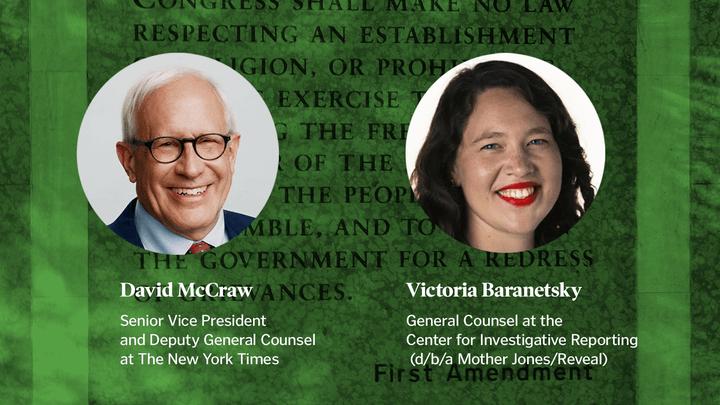It’s a moment that now seems destined to fade quietly from history, but 10 days before the presidential election on a brightly lit stage at Madison Square Garden, anyone watching or reading the news may have thought the race was over.
During his speech-slash-stand-up routine on Oct. 27 at Donald Trump’s rally at MSG, comedian Tony Hinchcliffe called Puerto Rico a “floating island of garbage.” There were plenty of shocking statements made during that event, but the racist “garbage” comment took off and generated the kinds of headlines that would make readers think the election had shifted, and that Trump had essentially vaporized any shot he had with Latino voters.
Tuesday night’s election results revealed something else entirely.
While Trump lost the overall percentage of Latino votes to Vice President Kamala Harris, he jumped 13 percentage points from 2020 to a record high for a Republican presidential nominee, according to national exit poll data. As the media dutifully documented Trump’s insults, threats and rhetoric along the campaign trail, it framed his immigration and mass-deportation plans as game-changers (or “game over”) for Latino voters. But Latino voters ultimately demonstrated across the country, including within many key swing-state districts, that they believed a Trump presidency is a better bet for them than a Harris term.
It’s clear that news organizations inaccurately reflected Latino priorities while leaning on assumptions about how they expected Latinos should react or feel about Trump’s aggressive immigration plans. The “garbage” joke was essentially framed as the last straw.
The election results underscore how disconnected and oversimplified media coverage of this community turned out to be. So, let’s start here: The term “Latino vote” has always sort of missed the mark.
“Latinos are still treated as a homogeneous voting bloc, disregarding the many differentiating factors within this vast segment of the population,” says Samuel Belilty, a former Univision executive who today hosts the Spanish-speaking podcast “Sentido Común” (translation: “Common Sense”) and who for 23 years led local news in California, Texas and Florida.
“Mainstream media often overlooks the fact that a Latino from Mexico may view life through a very different lens than one from Puerto Rico, Cuba, Venezuela or Colombia,” he said. “A new voter who recently acquired U.S. citizenship in Florida may prioritize different issues than a third-generation Latino living in San Antonio, Texas — yet both are categorized simply as ‘Latino.’”
According to a report by the Pew Research Center, Latinos make up half of the increase in newly eligible voters since the 2020 presidential election, and they are now nearly 15% of the nation’s eligible electorate. This election cycle, Pew reported that the economy was their top issue, followed by health care, violent crime and gun policy.
“The apparent shift in Latino preferences seemed to have been overlooked, unnoticed, or perhaps hard to envision, with reporting that largely assumed this demographic would support Democrats as usual,” Belilty said. “The surge in Latino support for Trump appeared to take the media by surprise, likely due to a persistent oversight or reluctance to acknowledge the rising influence of Latino voters as a critical electoral group.”
So who’s getting it right? And what can mainstream media learn?
A key to understanding how to better serve Latino audiences and how to more accurately reflect and cover this population may in fact lie outside traditional media, in the complex web of social media — which is also where you’ll actually find most Latino audiences today.
It’s where independent journalist Benjamin Zamora tracks the national pulse in the Latino community. When the “garbage” joke made the rounds, Zamora saw its impact differently from what was depicted by mainstream outlets.
“Despite the outrage in the Puerto Rican community, a large portion of Latinos were not surprised by the comments, as (Trump) had made similar remarks about Mexicans in 2016,” Zamora said. “Latino Trump supporters I spoke with said they cared less about his rhetoric than about his economic promises when deciding to vote for him.”
I first met Zamora about 15 years ago when he interned at the local Telemundo station in El Paso where I worked. His skills and initiative stood out even back then, and he went on to work as a reporter, anchor, news director and executive producer in major news markets including Los Angeles, Chicago and Las Vegas.
But last January, Zamora left his news anchor job at Telemundo KBLR-TV in Vegas. It wasn’t an easy choice, he said, but he realized most of his audience was on social media, so that’s where he wanted to be. Today he has more than 7.5 million followers across his channels.
“When I first began reporting news on social media in 2020, it never crossed my mind that it would lead to a new career,” he said.
Zamora says his TikTok account, where he produces video reports in front of a green screen and regularly responds to viewers’ comments, has generated more than 1.7 billion views over the past year. His most viral TikTok landed when he broke the news of a Latino Catholic priest being removed from the priesthood by Pope Francis.
“The secret is simple, but it requires a lot of dedication and translates into being consistent,” he said. “Since I started this project, I haven’t stopped informing the community, not even for a single day, including weekends and even during my vacations. I’ve stayed active with journalists who cover for me during my absences. My audience knows that if there’s news, I’ll be there to inform them, even in the middle of the night.”
Through all of those self-made productions, Zamora has mastered the power of bonding with the population he covers.
“I have a much closer connection with my audience. I try to go live at least three times a week to talk with them, read their comments, and answer their questions.”
When I spoke with Zamora over the phone Wednesday morning after the election, he was waiting at his gate to board a flight from Nevada to Washington. Minutes later, he popped on his camera and recorded a video on his feed, responding to a follower’s question on the elimination of birthright citizenship.
That’s the difference between a journalist like Zamora and the mainstream media. Sometimes the narrative doesn’t need to feature big, overarching concepts like race or immigration rhetoric; it’s about breaking down local, personal issues and real-life concerns that communities face every day. An engaged audience not only pays attention but also sees themselves reflected and participates in the conversations.
That leads to another reason why Latinos might not be so easily polled, tracked or influenced: They don’t have a singular outlet or information source like, for example, newspapers for older Americans or the Joe Rogan podcast may be for young, white American males.
“For national networks, including those broadcasting in Spanish, the challenge is real,” said Belilty. “The general approach has been to prioritize Mexican-origin Latinos, as they make up the majority in the U.S. But when mainstream media treat an arepa like a tortilla, well, Houston, we have a problem.”
One adjustment for media outlets going forward might involve digging deeper into local communities, through both social media and traditional local reporting, to better understand the specific group of Latino voters living within it. It’ll help news organizations better cover the issues that matter most to their respective audiences and — perhaps in future elections — help nudge politicians into addressing the issues that resonate with them.
That would seem to have a better chance of affecting an election outcome than one racist and offensive joke.







